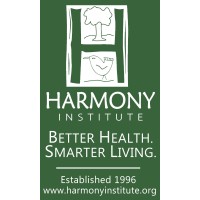
Harmony Institute
The mission of the Harmony Institute is to promote human health and well-being through the interaction of people, animals, and the environment. It’s vision is to encourage community development in which humans realize the health benefits of regular accessibility to nature and animals. The goal of the Harmony Institute is to initiate studies to evaluate health benefits to residents who have routine access to human-animal-nature interactions. While science has already established that our relationships with animals and nature are good for us, there is much more we need to know. Most studies have been of short-term nature and conducted in specialized locations such as health institutions, schools or penal institutions. Before the Harmony Institute, the ability to conduct long-term studies of the health and education benefits for residents within a community designed to accommodate these interactions did not exist. Similar in theory to the Framingham Heart Study which, with the cooperation of Framingham, Massachusetts residents, has allowed the National Institutes of Health, Boston University and other collaborative institutions the ability to study cardiovascular disease for the past 50+ years, the Harmony Institute believes a similar volunteer study might produce evidence that would encourage more community design that allows residents to routinely experience interactions with animals and nature as part of their daily activities. As stated by Alan M. Beck. Sc.D., Purdue University, Center of Applied Ethology and Human-Animal Interaction, “As we evolve further into a technological age that contributes to detaching us further from one another and strains normal human-human bonding, it becomes more critical to explore the benefits and applications of human-animal-nature interaction. An environment set aside to advance the knowledge of the use of these interactions in our society as a tool to offset existing social problems is vital to the health of our society.






